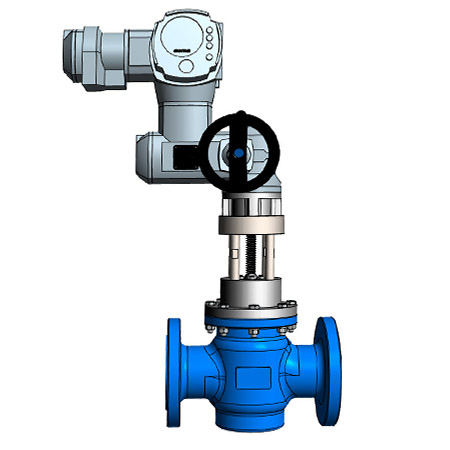Understanding the Relevance of Control Valves in Process Automation
Understanding the Relevance of Control Valves in Process Automation
Blog Article

Maximize Power Cost Savings and Convenience With Advanced Structure Automation Controls
In the world of modern-day style and facility monitoring, the assimilation of innovative structure automation manages stands as a pivotal development. By utilizing the power of automation, buildings can adjust, react, and progress in methods that were as soon as inconceivable.
Power Effectiveness Advantages
Energy performance advantages can substantially lower energy usage and functional expenses in buildings. By implementing energy-efficient techniques and technologies, building proprietors and drivers can accomplish considerable savings while likewise contributing to ecological sustainability. One of the primary advantages of boosting power effectiveness in structures is the reduction of energy expenses. Energy-efficient systems, such as advanced structure automation controls, can maximize using sources like heating, lights, and air conditioning, causing reduced power expenditures with time.
Moreover, improved energy performance can lengthen the life-span of building tools and systems. By running extra efficiently, cooling and heating systems, light, and various other building parts experience much less wear and tear, leading to lowered maintenance and replacement expenses. In addition, energy-efficient buildings commonly command higher home worths and rental prices, giving long-lasting economic benefits to owners.
Furthermore, power effectiveness can enhance resident convenience and performance. Appropriately managed indoor environments with optimum lights and thermal problems produce a more favorable and enjoyable workspace, leading to boosted staff member contentment and performance. In general, the energy efficiency advantages associated with innovative structure automation controls are diverse, including expense financial savings, ecological stewardship, and passenger wellness.
Enhanced Comfort Control
Enhancing convenience control in structure atmospheres needs an advanced combination of sophisticated automation systems for optimum owner health. By using innovative building automation controls, centers can customize the interior environment to satisfy the certain demands and preferences of occupants. These systems enable accurate policy of temperature level, air flow, and illumination, developing a effective and comfy atmosphere. Owner satisfaction and efficiency are carefully connected to thermal comfort, making it necessary to have systems in location that can adjust to changing conditions in real-time.
By including these advanced controls, structures can not just boost convenience yet additionally boost power effectiveness by enhancing system operations based on real occupancy and usage patterns. Ultimately, focusing on resident comfort with innovative automation systems leads to an extra satisfying and much healthier indoor setting.
Functional Effectiveness Improvements

Additionally, the execution of real-time tracking and analytics tools enables building operators to recognize power inefficiencies and operational anomalies promptly. By constantly checking power use patterns and system efficiency metrics, adjustments can be made in real-time to maximize power usage and ensure peak operational effectiveness. control valves. In addition, incorporating need feedback methods right into building automation controls can additionally enhance functional efficiency by dynamically changing power usage based upon grid problems and pricing signals
Indoor Climate Optimization
Efficient indoor environment optimization is an essential aspect of structure automation controls, making certain occupants' convenience and well-being while maximizing power cost savings. By making use of advanced sensing units and controls, building automation systems can continuously readjust and keep track of temperature level, humidity degrees, air high quality, and air flow to get redirected here produce an optimum interior environment. Keeping constant and comfortable problems not just enhances occupant complete satisfaction yet additionally increases efficiency and total well-being.
Interior environment optimization also plays a vital role in power efficiency. By fine-tuning cooling, home heating, and air flow systems based upon real-time data and occupancy patterns, constructing automation controls can considerably reduce power usage - control valves. Carrying out techniques such as demand-controlled ventilation and thermal zoning can aid official statement reduce energy waste while making sure that each area of the building obtains the required conditioning.

Sustainable Atmosphere Production
Structure automation regulates not just maximize interior climate problems for energy efficiency and occupant comfort yet likewise lay the structure for creating a sustainable environment via tactical administration of sources and systems. By incorporating innovative structure automation innovations, such as sensors, actuators, and smart software, facilities can check and change energy usage in real-time to reduce waste and lower their carbon impact. These systems enable anticipating upkeep, determining prospective issues before they intensify and optimizing devices performance to improve longevity and effectiveness.
Moreover, sustainable atmosphere production expands beyond energy administration to incorporate water preservation, waste reduction, and indoor air top quality improvement. Structure automation controls can regulate water use, detect leakages, and make certain correct garbage disposal techniques, contributing to general sustainability efforts. In addition, by controlling and checking ventilation and filtration systems, these innovations enhance passenger health and wellness and efficiency while reducing energy consumption associated with heating and cooling procedures.
Verdict
In verdict, progressed building automation controls deal considerable advantages in terms of energy cost savings, comfort control, operational efficiency, interior environment optimization, and creating a sustainable environment. By carrying out these controls, structures can accomplish ideal performance while minimizing energy intake and boosting occupant convenience. It is evident that using sophisticated automation technology is critical in enhancing building performance and producing a much more sustainable future.
Power performance advantages can considerably minimize power consumption and operational costs in structures. Generally, the power performance benefits linked with innovative building automation controls are multifaceted, encompassing expense financial savings, environmental stewardship, and resident wellness.
Furthermore, including need feedback methods right into building automation controls can better improve functional effectiveness by dynamically changing power use based on browse this site grid problems and rates signals.
Structure automation regulates not just optimize indoor climate problems for power performance and occupant comfort but also lay the foundation for producing a lasting environment through strategic administration of systems and sources.In final thought, progressed building automation manages offer substantial benefits in terms of power financial savings, convenience control, operational performance, interior environment optimization, and producing a sustainable atmosphere.
Report this page